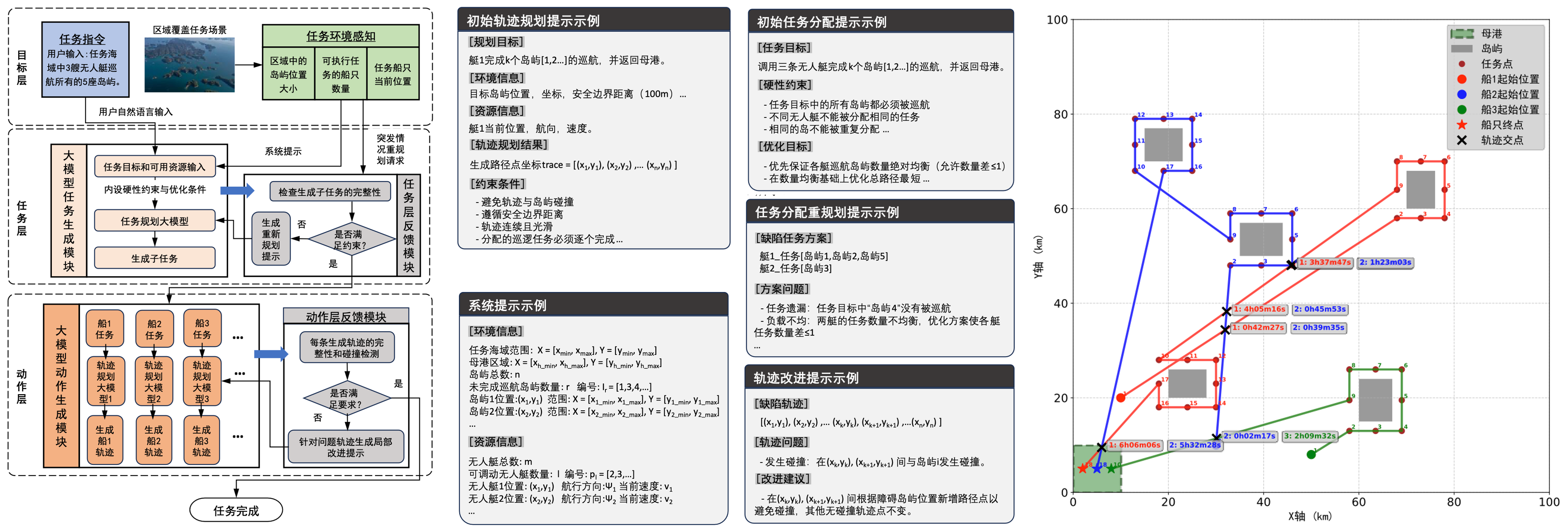LLM-enabled Swarm Robots
Dynamic task assignment in USV Swarms

State-of-the-art
- Centralized Task Planning: LLMs (e.g., GPT-4) are used as high-level planners to decompose complex tasks into executable sub-tasks for homogeneous robot swarms, leveraging natural language commands for intuitive human-swarm interaction.
- Decentralized Coordination: Studies explore LLMs for generating localized behavior rules (e.g., via prompt engineering) to enable emergent coordination, though real-time adaptability remains limited.
- Semantic Communication: LLMs enhance communication efficiency by translating sensory data into natural language summaries, enabling context-aware information sharing within the swarm.
- Few-Shot Learning: LLMs facilitate rapid policy adaptation by interpreting few-shot demonstrations or textual instructions, reducing the need for extensive retraining.
- Simulation-Centric Testing: Most experiments are conducted in simulated environments (e.g., ROS, Gazebo) due to computational constraints and safety concerns.
Future Research Directions
- Real-Time LLM Optimization: Developing lightweight, edge-deployed LLMs to reduce latency and enable on-board decision-making for dynamic environments.
- Hybrid Architectures: Integrating LLMs with traditional optimization-based controllers (e.g., MPC) to ensure robustness and safety-critical compliance.
- Cross-Modal Understanding: Enhancing LLMs to process multi-modal inputs (e.g., vision, lidar) for holistic environment perception and task execution.
- Ethical Frameworks: Establishing guidelines for LLM-driven swarm autonomy, addressing bias, accountability, and transparent human-swarm collaboration.
- Large-Scale Physical Deployment: Transitioning from simulation to real-world applications (e.g., disaster response, precision agriculture) with resilient communication protocols.
Challenges: Energy efficiency, scalability, and mitigating LLM hallucinations in safety-sensitive scenarios remain key hurdles. Interdisciplinary efforts combining NLP, robotics, and systems engineering are critical for advancement.